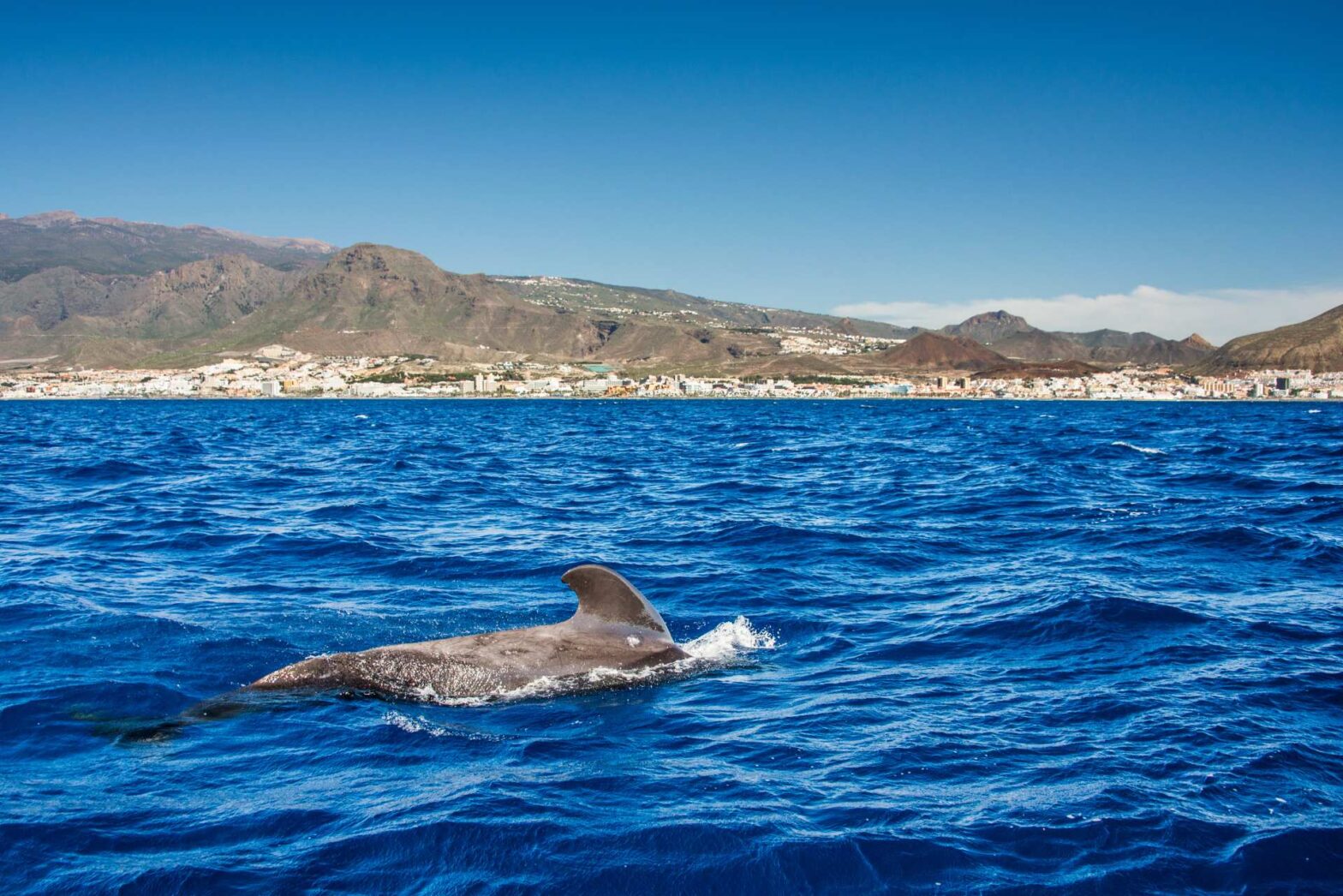Protecting the habitat of whales and dolphins off Tenerife – OceanCare joins Save Fonsalía Platform
The ocean area along the southwestern coast of Tenerife, the largest of the Canary Islands, harbours a particularly rich biodiversity, including submarine grasslands, coastal reefs, marine turtles, seabirds and 20 species of cetaceans, among them a resident population of short-finned pilot whales. Accordingly, it became part of the European nature conservation network Natura 2000 as “Teno-Rasca”, the largest SAC (Special Area of Conservation) in the Canary Islands. However, one part in the middle of this coastline had been cut out of the SAC – not because it was less biodiverse, but because there are plans to construct a large port there. These plans jeopardize the ecological integrity of the region and sparked resistance among the local population, which formed the Plataforma Ciudadana Salvar Fonsalía (Save Fonsalía Citizens’ Platform). OceanCare is happy to join the coalition and to support the efforts to save the Fonsalía region and its wildlife.
The southwest of Tenerife is one of the areas in Europe with the greatest diversity of cetaceans, with frequent sightings of sperm whales, Blainville’s beaked whales, spotted, common, striped and rough-toothed dolphin, and many others. Most remarkable, however, is the resident (non-migratory) population of short-finned pilot whales (Globicephala macrorhynchus). It is the largest population of this species in EU waters and one of only four known resident populations globally, with the other three found off Japan, California and Hawaii.
The construction of the so-called port of Fonsalía, developed in the Guía de Isora municipality and located at the coastal nucleus of Alcalá, Playa de San Juan, would include a 739 m long dock and a 5.5-hectare esplanade with capacity for cruises and more than 460 recreational boats. The Fonsalía harbour would have a broad range of destructive impacts on the region’s wildlife and biodiversity:
- The construction site directly overlaps with a critical area for the green turtle (Chelonia mydas), a priority species of the EU’s Habitats Directive, which is already under pressure in the region due to fisheries, debris and boat strikes.
- Noise pollution would tremendously affect the short-finned pilot whales, which rely on their great echolocation abilities for foraging.
- The Fonsalía region is currently a kind of refuge for pilot whales from the pressures of excessive whale watching, the second most important tourism attraction in Tenerife.
- Growing and intensified vessel traffic would further increase the number of collisions with marine turtles and cetaceans such as sperm whales, beaked whales and pilot whales, which already is a serious problem in the Canary Islands.
- Artificial lighting would increase the risk of juvenile shearwaters and marine turtles to get disoriented and die instead of reaching the ocean. Presently, the region of the planned port has a much lower incidence of shearwater disorientation than adjacent districts.
The SAC Teno-Rasca already has four harbours, with only 25 km of coastline between Los Gigantes in the north and Los Cristianos in the south. The promoters of the Fonsalía harbour project argue that the port of Los Cristianos was overloaded. However, this could be easily solved by reorganising the ferry timetables and the operation of the port.
For all these reasons, OceanCare opposes the construction of the Fonsalía harbour and supports the work of the Save Fonsalía Platform. In particular, we urge the tourism industry to live up to their responsibility by calling on politicians and authorities to refrain from building another port. In addition, OceanCare calls for a reduction in shipping speed and for engagement in sustainable port management strategies for existing harbours.
